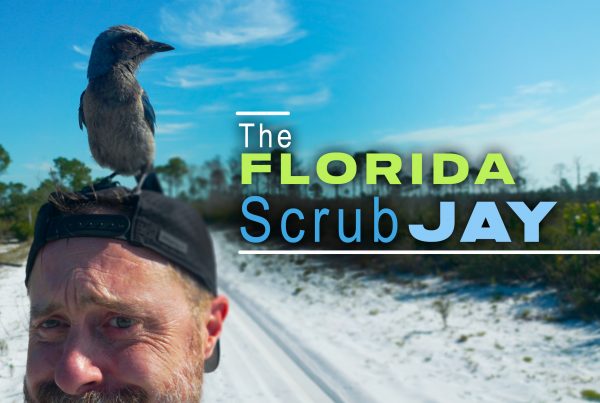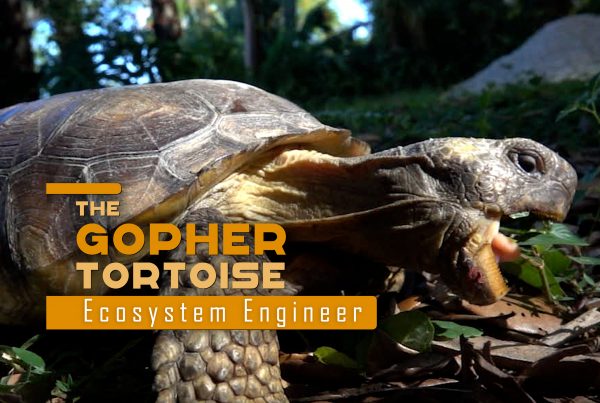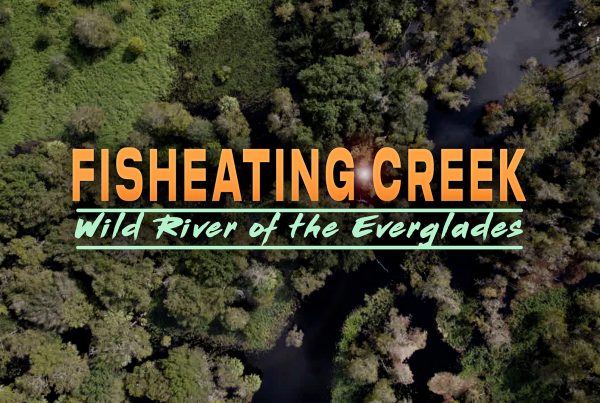South Florida’s subtropical climate makes it a comfortable place to settle down, and not just for us humans.
Amazingly, some species that become invasive in one area can be rare or endangered in their native range. A good example is the Burmese Python. In the Everglades, they are taking over while in South Asia where they belong, they are disappearing. Biologists in Florida who are working to understand the invasive Burmese pythons here have learned a lot about their behavior and biology. Ironically, what they are learning in South Florida in order to figure out how to get rid of them here, may help conservationists save them in their native range.
While many of our invasive species, like the Burmese python arrived here on purpose via the pet trade, many other invasive species come here accidentally. Do some research to figure out how other invasive species in the U. S. got here as accidental hitch-hikers.
Constricted: Florida’s Exotic Invaders
South Florida: This is the place I call home. Some call it paradise. Others call it exotic, and in many ways it is. Over 2 million people live here, including me. Multiply that times six, and that’s how many tourists visit each year. Most of us come from somewhere else, and all of us make this place the spicy, vibrant cultural melting pot that it is. I love Miami for all of these reasons, but mostly because it is surrounded by incredible natural treasures.
“What’s up everyone, today we’re digging into the concept of “exotic species,” and before we head outdoors, we’re going to kick things off in The Lab by clearing up a few things. What is a “native” species versus an “exotic” species. How do exotic species wind up in a place like South Florida, and what makes certain exotic species “invasive?”
Humans aren’t the only species that make South Florida, quote “exotic.” In many ways, this subtropical paradise can be pretty harsh, but with technology like air conditioning and mosquito repellent, we’ve adapted. And in many ways, we’ve made nature adapt to us. You might say that we are the ultimate exotic invasive species here. Other organisms from tropical and subtropical climates around the world, however, have found ecosystems like the Everglades to be just as hospitable, or even more so, than their native habitats.
“Exotic Species” in South Florida have been all over the news lately. Check out this record breaking 18 foot 9 inch Burmese python that was just removed from the Everglades by professional python hunters Ryan Ausburn and Kevin Pavlidis. What a monster, great work guys!
A “native species” is a plant or animal that has become established in an ecosystem over a long period of time. Many of these may have migrated here naturally, emphasis on natural. Take a lot of our tropical orchids, like the ghost orchid. This species likely came over from Cuba, it’s dust-like seeds blowing over on hurricane winds hundreds of years ago. Today we consider the ghost orchid to be a native species. The key factors are that the process was natural, and its been here a long time. How long does a species have to be here to be considered native, well that’s a topic for debate.
South Florida’s subtropical climate has become a comfortable home to a wide variety of invaders. We find them in practically any body of water, whether it be fresh or marine. Some we just take for granted as if they’ve always been here.
“Exotic species” are plants or animals that are non-native. Some are relatively harmless to the ecosystem while others can significantly modify or disrupt the ecosystem they colonize. Those exotics are referred to as “Invasive species.”
Invasive species displace the native ones, outcompeting them for resources and disrupting the natural web of life in the Everglades, or whatever ecosystem they’ve invaded.
There are a lot of factors that determine whether an exotic species becomes invasive. Perhaps it’s uniquely evolved to hide, hunt or defend itself, to take advantage of the available landscape and native prey. Perhaps the new community lacks certain parasites that the organism might be a host for in its native range.
So how do these exotic, and invasive exotic species get here? Lots of ways. Humans have covered the Earth, and we’re constantly traveling and trading from far-flung regions of the planet. Often we bring baggage, some unintentional, some intentional.
The feral cat, believe it or not, is one of the most consequential. Cats kill at least 1.4 billion birds in the U.S. each year. Think about that. That purring fluff-ball in your lap, it’s a killing machine.
Hitch-hiking insects or plant seeds often wind up here in shipments of produce. Some are imported on purpose. Plants are a great example. If you live in South Florida, just walk outside and look at your landscaping. Chances are that palm tree is from South America, or Southeast Asia.
One of our worst invasive species is an Australian tree called melaleuca which has completely taken over thousands of acres of Everglades marsh. Seeds of this tree were actually spread to try to dry out marshy areas in South Florida and today, you can see what a problem it’s become.
Many of our most famous exotic species came here through the pet trade, becoming established after escaping or being intentionally released. So if you’re dying to get a pet, do your research, and be responsible. Make sure you know the behavior and needs of the animal and are prepared to love it and own it for its entire life. If you’re not up to the task, don’t get it. Simple as that.
When you think of invasive species, your mind probably turns to large reptilian predators like the Burmese python, or the Argentine black and white tegu. They get all of the attention. But you don’t have to be big to cause big problems. And today, we’re starting small.
The zebra longwing butterfly is a beautiful native of Florida. In fact, it’s the State butterfly. But they face a new threat. Wasmania: the little fire ant. For this Central American species, butterfly eggs and larva, like these zebra longwing caterpillars are easy targets. Often called the “electric ant,” this tiny insect can give humans a painful bite. For butterflies, they are an existential threat.
The zebra longwing isn’t the only beautiful native in trouble. South Florida is home to a number of flashy tree snails, some endangered. The liguus tree snail was once almost hunted to extinction by humans that collected them for their gorgeous shells. Today, they are hunted by a new invader.
This isn’t just any worm. This is the New Guinea flatworm and it is terrifying. If you’re a snail at least.
“The New Guinea flatworm is a large threat to these liguus tree snails. They actually start at the base of the trees and they follow the trails that the tree snail leaves as they crawl up or come down the trees. Eventually finding the tree snails and eating them.”
First discovered in Florida in 2012, this invasive predator has had a quick, devastating impact on our native snail communities. Hammocks which once hosted thriving populations of tree snails, including the gorgeous liguus tree snails, have become graveyards of empty shells.
But there is another slithery invader that has become infamous in Florida.
“Python!”
The Burmese python. Growing as long as 19 feet, the hungry constrictor can give the alligator a run for its money. What’s worse, they are spreading and eating just about anything that moves.
“Yeah, the Burmese python. It is just an absolutely fascinating creature. For it to have taken over an ecosystem that’s pretty harsh, I call these Florida Burmese pythons. They’re not Burmese pythons anymore, they basically are top apex predators that have learned the environment in and out and just taken over. You know, they have to be amazing to be able to do that.”
The Burmese python problem is a human problem. Escaped pets have now become invasive predators and it takes a special kind of hunter to remove them from this embattled ecosystem. It’s a good thing Donna has assembled a team of python prodigies she calls the “Everglades Avengers.”
“Majority of the time you’re not going to see the whole snake. So when I’m trying to spot a python, I’m just trying to use my brain’s ability to do pattern recognition and I’m actually looking for that pattern on the skin. That’s 90 percent of the spots, when I spot a python, that’s what I spot is that pattern.”
Kevin is an experienced herper with an amazing ability to spot pythons. And he’s caught a ton. In fact he’s shattered the record for most Burmese pythons caught in a single month (133, the old record was 27).
“I moved from Indiana to Florida about a year and a half ago with the sole purpose of figuring out how to be a python hunter.”
And Amy has figured it out alright. In that time she’s caught just over 100 pythons, including this 17’ 3” monster all by herself.
“One of the hardest parts about hunting the pythons is that we have to euthanize them. They’re beautiful, fascinating and amazing creatures and it’s not their fault that they’re here. If that’s the case, then we should do everything we can to use as much of the python as we possibly can so they don’t go to waste, so they don’t rot in a pile somewhere.”
Python hunting and high fashion don’t often go in the same sentence. Amy, however, has teamed up with BSwanky, a local brand that is fashioning designer handbags out of the skins of pythons removed from the Everglades. A portion of their proceeds supports the work of South Florida National Parks Trust. A win-win if you ask me.
As of 2020, licensed contractors like Amy, Kevin and Donna have caught over 5,000 Burmese pythons in the Everglades. But they do it with a little help from their friends, and I couldn’t pass up the chance to give it a try. Even my daughter Scout tagged along, though it was a bit past her bedtime
“That, folks, is exciting!”
Comment by Donna about Scout being youngest volunteer
My buddy Mike Lloret loves reptiles of all kinds. For a herpetology enthusiast, this is a great place to live and work.
“Here in South Florida, we are extremely privileged to be the only place in the world where both crocodiles and alligators live in the same areas and coexist in the wild.”
Not long ago, Florida’s American croc population was on the verge of collapse. Fortunately, they have rebounded thanks to important conservation measures.
Mike is in charge of studying and monitoring crocodiles at Turkey Point Clean Energy Center which has become an important nesting site. It’s never a dull day at the office, and tonight, I get to lend him a hand.
“Crocodiles have come such a long way here in South Florida. And when you look at potential threats to them as a species, you think about things such as invasive species. A threat like the tegu, which could potentially impact the crocodiles before they even hatch could pose a big-time threat to the American crocodiles here in South Florida.”
The Argentine black and white tegu is gorgeous. It is also an invasive, opportunistic predator. The tegu is no match for a big croc, but here’s the problem. This sneaky lizard loves eggs. All kinds of eggs.
“We have evidence that tegus actually prey upon alligator eggs. Because there are a lot more alligators, we tend to find more tegus eating alligator eggs. However, because they have a taste for those eggs, we know that they can become a direct threat to the American alligator. So here at Turkey Point, we have an invasive animal management program where we try to eradicate all of these invasive species and keep our lovely native crocodiles protected.”
As a biologist, Mike uses every instrument at his disposal to monitor croc nests. Camera traps have proved to be a valuable tool. Not only do the images capture important clues about the nesting behavior of the crocodiles, but they give Mike a snapshot of other important native species that are using the habitat, as well as exotic species that might pose a problem, and the tegu isn’t the only creature of concern. Green iguanas often burrow into the same nesting mound that a female crocodile uses. This could potentially expose the eggs, or cause the nest to collapse.
“Whether we brought them here accidentally, like the wasmaina ant and the New Guinea flatworm or on purpose, like the Burmese python, the Argentine tegu and the green iguana, most of the invasive species we’ve looked at today are here because of us. Thankfully we have science and technology on our side. With the right tools, good data and a lot of hard work, we might just be able to get a handle on Florida’s invasive exotics.
That’s all for today, thanks for watching. Now get out, explore and remember, leave only footprints.”
Coming soon




